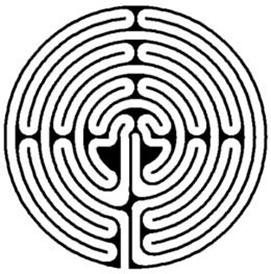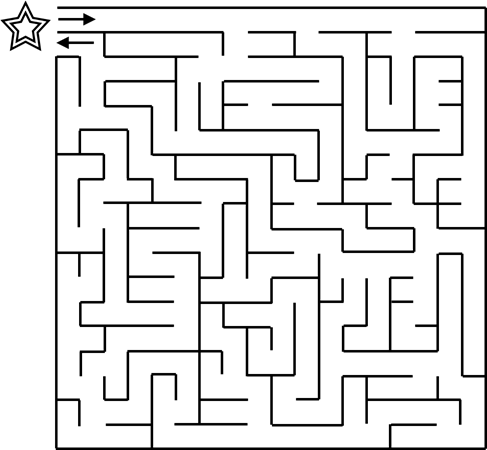Unicursal refers to the maze that has one winding paths that will inevitably lead to the centre; It originates from the Cretan Labyrinth, one of the earliest known version of a maze/labyrinth. Its story forms from the maze that held the minotaur, there was no need for a multicursal maze because there was never an intention of letting those who entered back out, only if they defeated the minotaur in the centre would they be able to make their way back out.
Like this maze for example, it has many curving lines and it looks most likely to consist of multiple paths but it is all one path winding and leading to the centre.
Whereas multicursal consists of numerous dead ends and paths that lead back out of the maze, only one or two paths at most will actually lead to the centre of the maze.
This maze has many visible dead ends and paths that lead nowhere, this makes it multicursal because there are multiple ways to travel through the maze and most will consist of doubling back.
If we look throughout history and myth of labyrinths, a multicursal was foten designed to confuse and have the person lose themselves within it, whereas a unicursal would definitely lead you to the centre eventually, losing the sense of puzzle or challenge, it was often whatever was in the centre that would create the challenge.
I feel that both these types could serve some purpose in my game. I feel the use of unicursal mazes as a tutorial level, slowly introducing multicursal in preperation for the final labyrinth which would contain (hopefully) and intricate level of multicursal paths and dead ends each dead end containing a puzzle or set back of some sort.


No comments:
Post a Comment